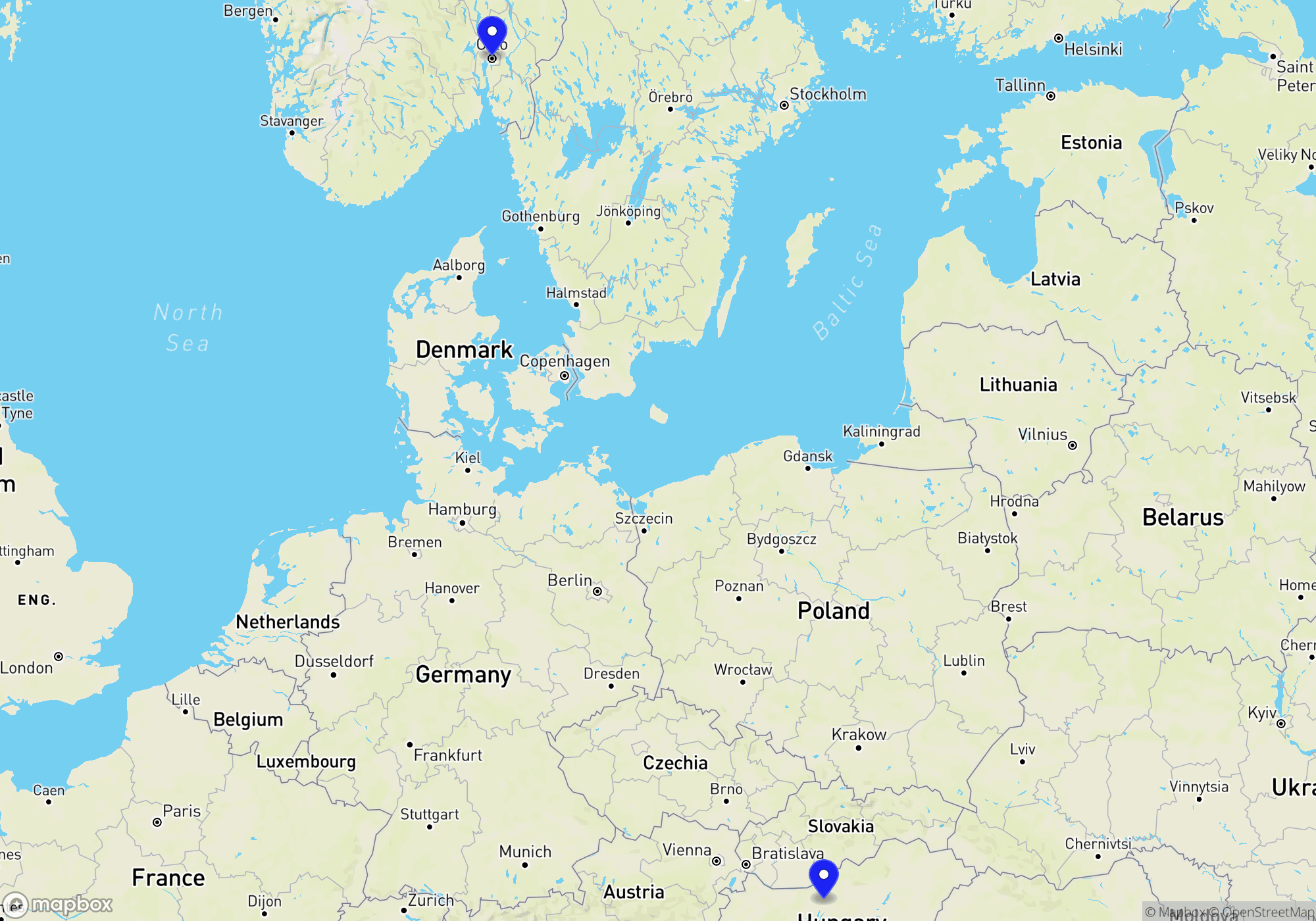
You can buy train tickets directly from the operator or through a reseller. The reseller is typically slightly more expensive (3-5%) but can provide an easier booking experience, especially if you travel with more than one operator.


These operators provide a complete journey either as a direct connection or through their partners. Even if a change of trains is involved, it’s all part of a single itinerary managed by the same train company or its partners, offering a smoother and more coordinated travel experience.

Some operators don’t run direct trains the whole way, but they serve either the departure or arrival station. In many cases, you can combine two of these operators to complete your journey by changing trains along the way. This is often a flexible and budget-friendly way to travel — especially if you’re comfortable piecing together your own itinerary.
Just keep in mind that these are separate journeys, which means a delay on the first leg could cause you to miss the second without automatic compensation or rebooking. It’s a great option for confident travelers who don’t mind a bit of extra planning.




FlixBus is primarily known as a long-distance bus company, not a rail operator, but they do offer connections involving train services through FlixTrain in some countries. FlixTrain operates primarily in Germany and Sweden, offering an affordable and eco-friendly alternative to traditional train travel. The train types used by FlixTrain are typically refurbished older models from third-party rail companies, enhanced to meet the brand’s distinctive bright green color and standards for comfort. Amenities on FlixTrain often include free Wi-Fi, power outlets at seats, and seats with adjustable backrests. Some trains offer a small selection of snacks and drinks for purchase.
With regards to customer support services, FlixTrain provides a straightforward online booking system and a customer service hotline for assistance. Additionally, their app allows for tracking train status, managing bookings, and accessing your ticket. First-time travelers are encouraged to book in advance as seats can fill up quickly given the budget-friendly pricing model.
It’s worth noting that while this information is relevant to FlixTrain under the FlixBus brand, this does not directly relate to travel from Budapest to Oslo, as such a specific rail service would likely involve multiple operators and require careful travel planning. Therefore, travelers should verify the connection options and ensure they are aware of any changes in rail operator services that might impact their journey.
Traveling by train from Budapest to Oslo involves passing through multiple countries, including Hungary, Austria, Germany, Denmark, Sweden, and Norway. The Interrail Global Pass is valid for European residents and allows travel across these countries, making it suitable for the journey from Budapest to Oslo. The Interrail One Country Pass would not be valid for this multi-country route, as it only permits travel within one specific country. The Eurail Pass, designed for non-EU residents, is also valid for the journey across multiple countries from Budapest to Oslo. Hence, both the Interrail Global Pass and Eurail Pass can be used for this trip, depending on the traveler’s residency status.
Upon arriving in Oslo by train, you’ll be at Oslo Central Station (Oslo S), which is the main hub for the city’s public transport system. From here, you can easily access several modes of local transportation to get around the city. The Oslo Metro, known as T-bane, is an extensive underground network with six lines that connect the city center to various suburbs. It’s efficient for reaching major attractions and residential areas. The Tram (Trikken) system operates within the city center and nearby neighborhoods, offering a scenic and convenient way to explore Oslo. Buses complement the metro and tram networks, providing access to places not covered by rail. For short trips or inner-city travel, taxis are widely available and can be found at taxi ranks throughout the city or hailed via phone apps. Ridesharing services such as Uber and Bolt are also operational in Oslo, offering an alternative to traditional taxis. For all public transportation, consider purchasing an Oslo Pass or a Ruter ticket, which gives you access to all forms of public transport, including buses, trams, and the metro. These can be purchased at stations, via the Ruter app, or at kiosks throughout the city.
Oslo, the capital of Norway, is well-connected by train both domestically and internationally, offering scenic routes through the country’s picturesque landscapes. Domestically, one popular route is the Oslo to Bergen line, known as the Bergen Line or Bergensbanen, which is considered one of the most beautiful train journeys in the world. It traverses the mountainous terrain and offers stunning views, including the Hardangervidda plateau. Another significant domestic connection is the Oslo to Trondheim route via the Dovre Line. This route takes you through picturesque valleys and offers access to Norway’s hiking and skiing areas.
For international travel, Oslo connects with Sweden and beyond. The Oslo to Stockholm route, operated by SJ, is a frequent and convenient service that takes about six hours and travels through scenic countryside and coastal landscapes. From Stockholm, passengers can connect to other European destinations. Additionally, Oslo has train services to Gothenburg in Sweden via the Norwegian State Railways (Vy), providing access to Sweden’s west coast and further connections to Denmark and mainland Europe.
These routes make Oslo a central hub for train travel in Scandinavia, offering access to a variety of destinations with breathtaking views and comfortable services.
The best time to visit Oslo generally spans from May to September. During these months, the weather is pleasant, with long daylight hours and temperatures ranging from mild to warm, making outdoor activities enjoyable. May and June offer the benefit of blooming parks and gardens, coupled with the celebration of Constitution Day on May 17th, a major festive event marked by parades and cultural activities. July and August are ideal for exploring the city’s extensive network of hiking trails and experiencing the vibrant atmosphere of summer festivals, such as the Oslo Jazz Festival.
If visiting in May or September, you’ll likely find cheaper train fares as it sits on the shoulder of peak tourist season. This period still offers favorable weather but with fewer crowds, which can enhance your experience of key attractions. Winter months, particularly from December to February, bring the allure of snow-covered landscapes and the opportunity to engage in winter sports near the city. Travelers interested in winter activities or Christmas markets should consider this period, although they might encounter higher prices during the holiday season.
Arriving by train offers a scenic journey through Norway’s picturesque landscapes, particularly rewarding if you travel during the transition between seasons such as from winter to spring or summer to fall. Regardless of when you visit, ensure you check upcoming festivals and events as Oslo hosts a variety of events throughout the year that could enrich your travel experience.
When traveling by train from Budapest to Oslo, it’s essential to pack your valid passport and any necessary visas if applicable, as you will be crossing international borders. Bring a European Health Insurance Card (EHIC) or travel insurance details. Carry a power bank to keep your devices charged during the journey, along with a two-pin Type C power adapter as Hungary and Norway have compatible plug types. Ensure you have a printed or digital copy of your train tickets and accommodation details. Pack comfortable clothing suitable for the Scandinavian climate, which may be cooler than Budapest, as well as layers for temperature changes on the train. Include a reusable water bottle, light snacks, and entertainment items such as books or a tablet. If you plan to explore Oslo, bring a city map or a digital navigation app, and comfortable walking shoes for sightseeing. Lastly, consider a lightweight rain jacket or umbrella for unpredictable weather and any personal medications or toiletries you may need.